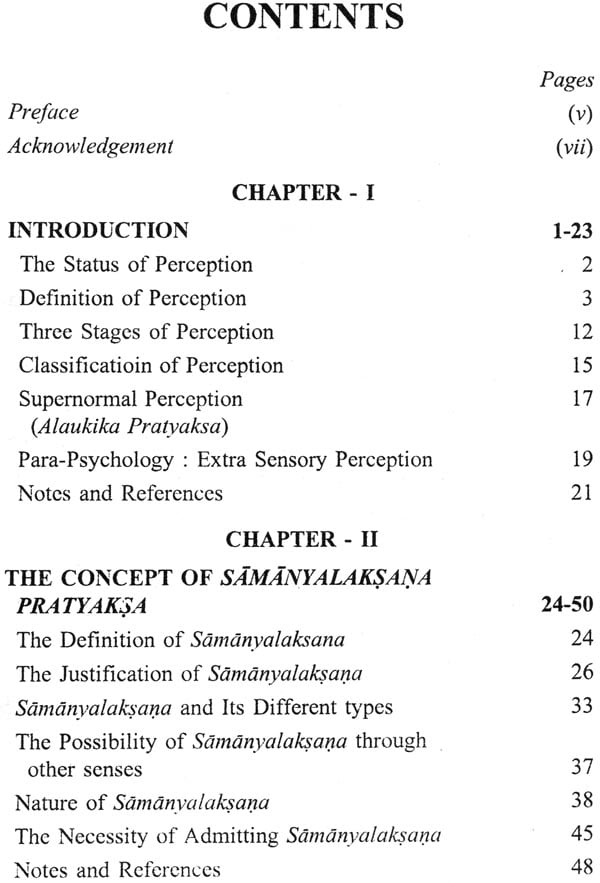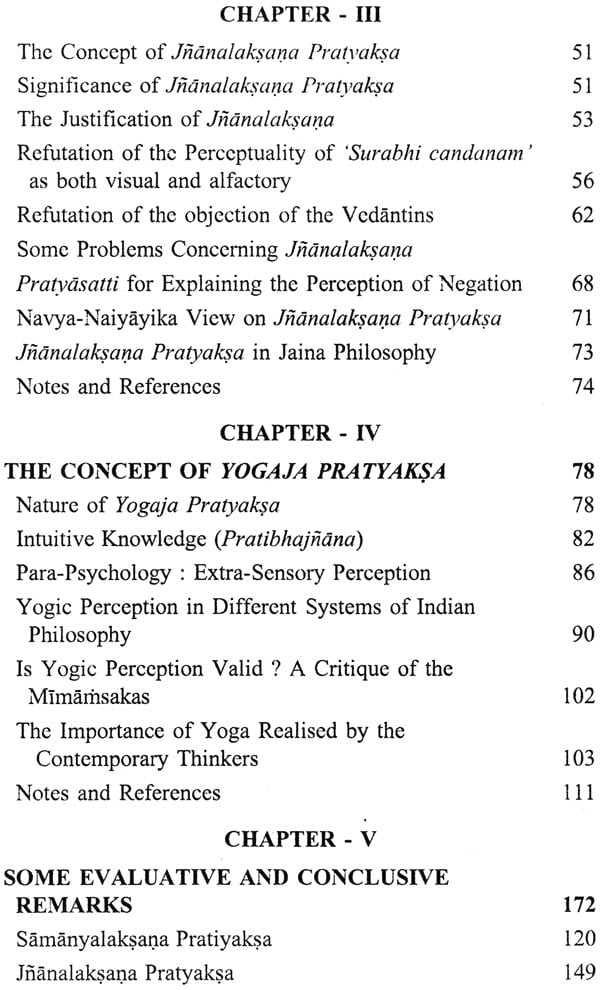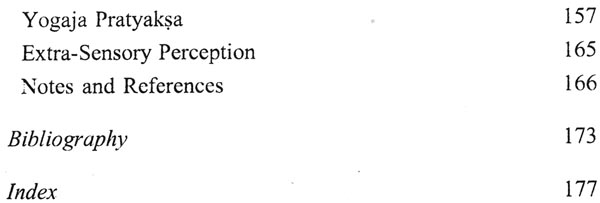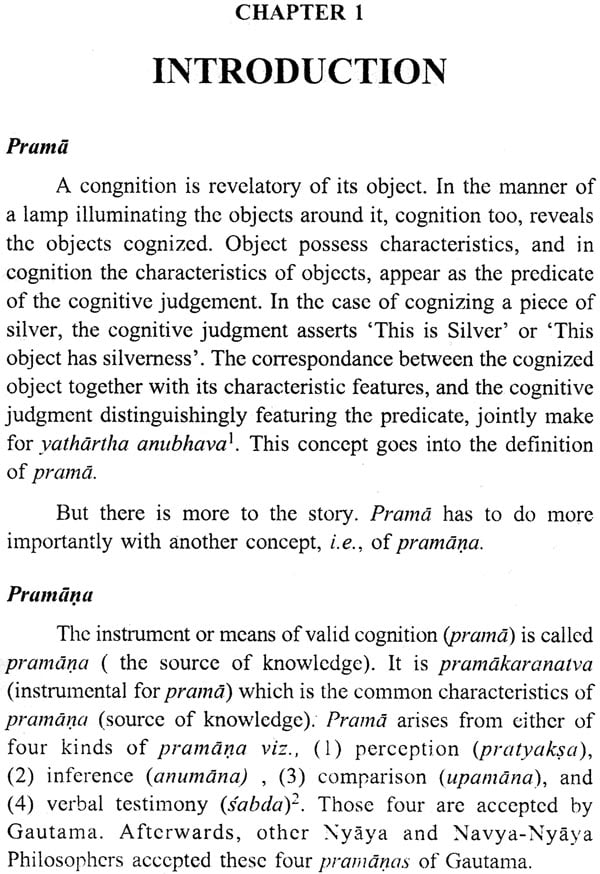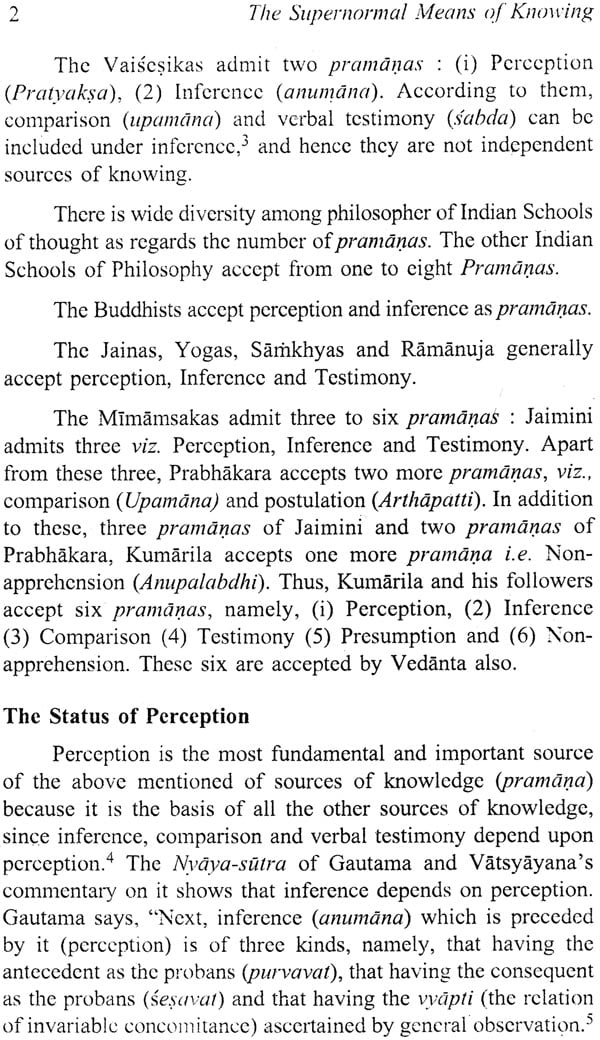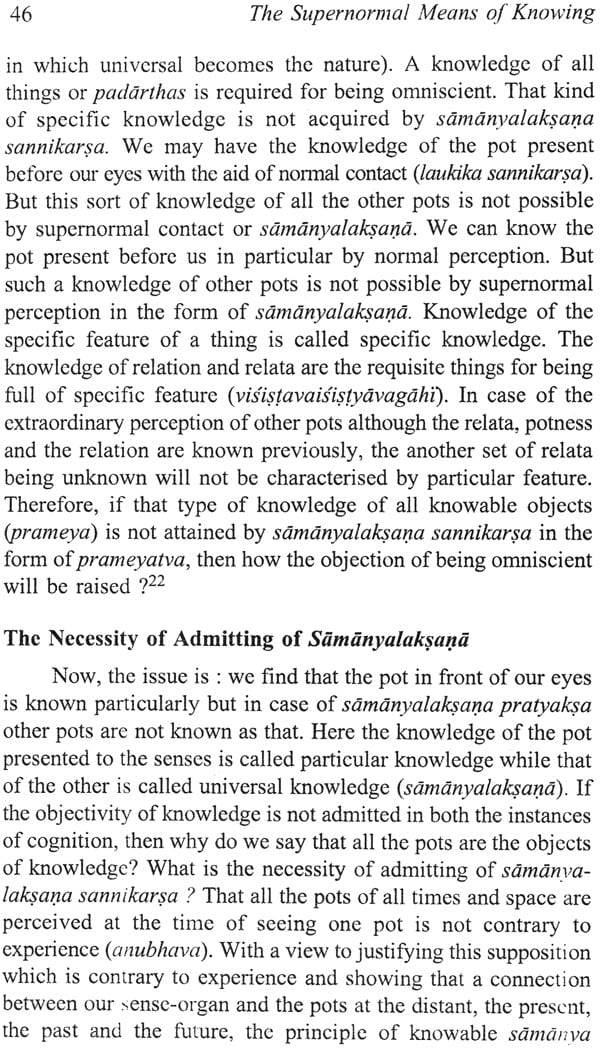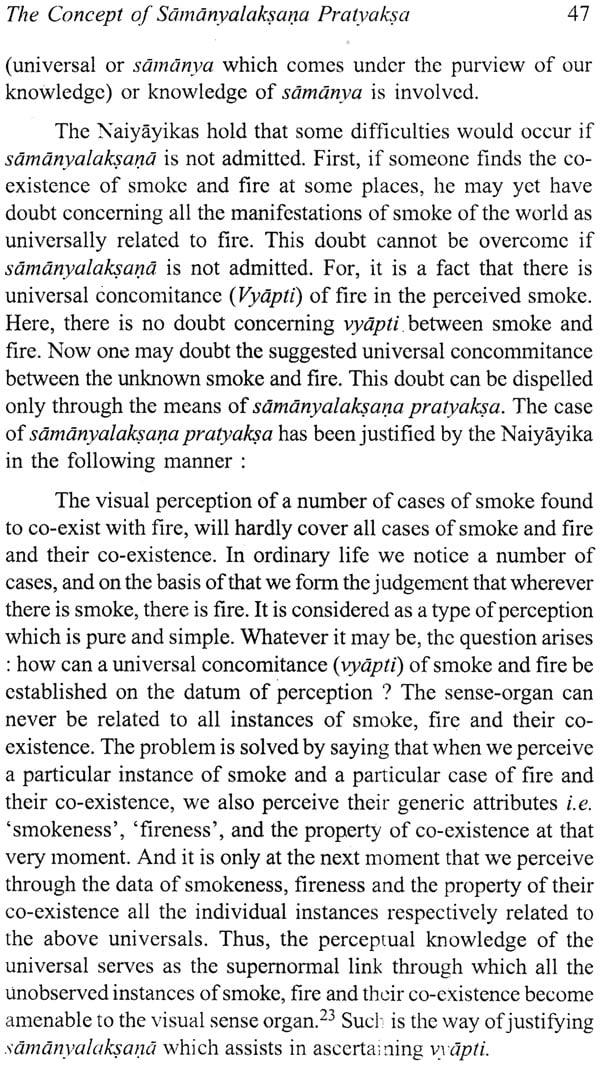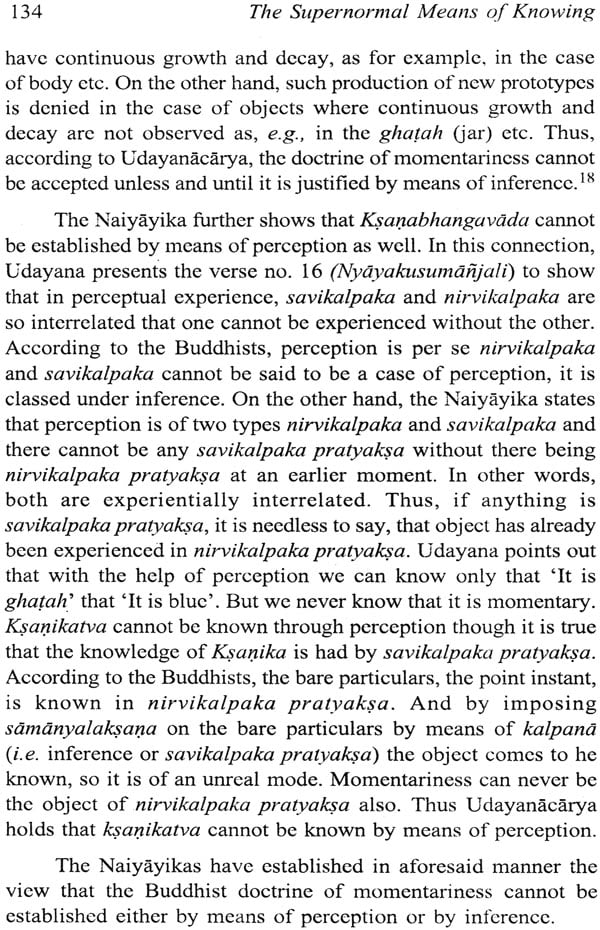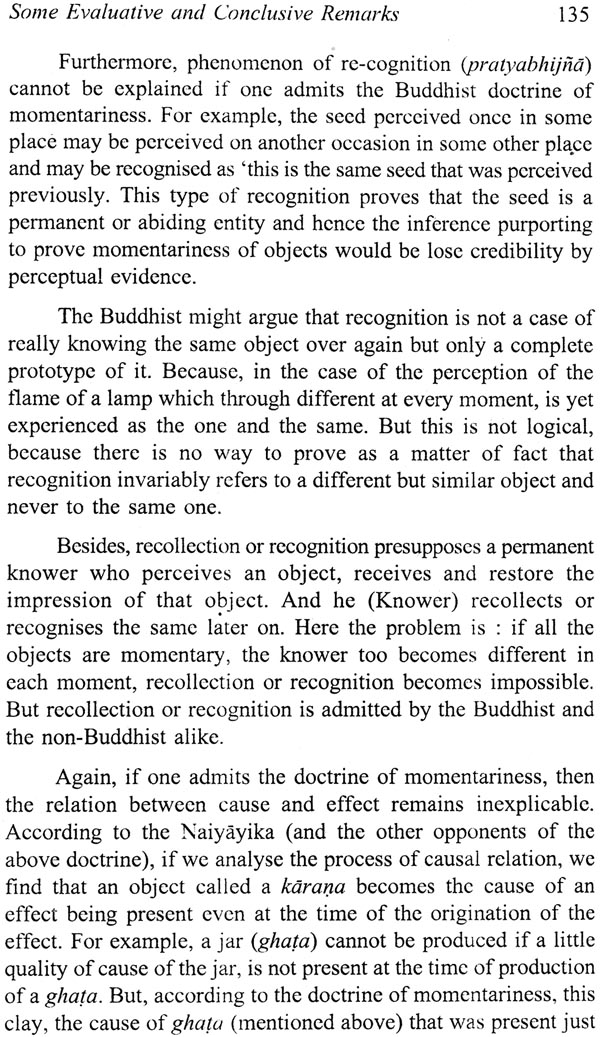
The Supernormal Means of Knowing
Book Specification
| Item Code: | NAR429 |
| Author: | Dr. Bhupendra Chandra Das |
| Publisher: | Bharatiya Vidya Prakashan |
| Language: | English |
| Edition: | 2011 |
| ISBN: | 9788121702300 |
| Pages: | 198 |
| Cover: | HARDCOVER |
| Other Details | 9.00 X 6.00 inch |
| Weight | 420 gm |
Book Description
The book entitled ‘The Supernormal Means of Knowing: A Navya Nyaya Approach’ is the result of the intensive and critical study on the supernormal means of knowledge. It is intended to show that besides the normal ones, there are some supernormal means as well for knowing an object. It consists of the meaning of the term alaukika (supernormal), its incorporation under the category of perception, just as there are problems regarding samanyalaksana, jnanalaksana and yogajja modes of perceiving (three supernormal means). The Buddhists have rejected the hypothesis of samanyalaksana, the Advaita Vedantins have denied jnanalaksana as a form of supernormal perception. The Mimamsakas also do not admit yogaja pratyaksa showing some reasons. Here an attempt has been made to refute the views of the Buddhists, those of the Advaitins and of the Mimamsakas and rehabilitate the three extraordinary means following the line of Gangesa and other Navya, Naiyayikas. The problems of ParaPsychology: Extra Sensory Perception also have been dealt with in this book. Yogic perceptions in different systems of Indian Philosophy like Vaisesika, Bauddha, Samkhya, Yoga, Advaita Vedanta, Visistadvaita Vedanta and Jaina have been placed in it. The importance of Yoga has been realized by the contemporary thinkers like Sri Aurobindo, Swami Vivekananda and Rabindranath Tagore. Their views also have been presented in it. The conclusive part of the book deals with some critical and evaluative remarks some critical and evaluative remarks on the view of the Navya Naiyayikas.
Dr. Bhupendra Chandra Das has been engaged in research and teaching in Philosophy for more than eighteen years. He is specialized in Indian Philosophy, specially Vedanta, Nyaya, Yoga and Western Logic. He has published 22 research papers on various fieldsd of Indian (classical and contemporary) and Western Philosphy in different professional (national and international) journals. He is at present a Reader in the Department of Philosophy and the Life-world and was the head of the same Department, Vidyasagar University, Midnapore. He is now the Chief Editor of ‘Philosophy and the Life-world,’ Vidyasasgar University Journal of Philosophy.
The present tract The Super-normal Means of Knowing: A Nevya Nykya Approach is intended to show that besides the normal ones, there are some supernormal means as well for knowing an object. These super-normal means of knowing are called alaukika pratyaksa. As the term alaukika is attached to the term 'pratyaksa', it has to be accepted as a form of perception. Though there are quite a number of works done by different scholars on the epistemological problems of Perception, Inference, Comparison and Verbal testimony, yet works on the alaukika aspect of Pratyaksa are few in number. Problems abound regarding the meaning of the term alaukika, its incorporation under the category of perception, just as there are problems regarding Samanyalaks ana, Jnanalaksana and Yogaja modes of perceiving. Each of these calls for a closer look. An effort has been made to remove these logical intricacies and to defend the Navya-Nyaya position. There are arguments available in the texts as there are interpreted and some arc available in the commentarial literature like Kiranavali, Dinakari, Ramarudri etc., while some are suggested by my own judgement and understanding. Whatever I have said in defence of Navya Nyaya standpoint may not be accepted by all. But, I do believe my arguments, logical analysis and conclusion are not devoid of being cogent, interesting and convincing. If whatever I have suggested causes intellectual satisfaction of my readers and makes them ponder over these issues, I shall think my labour amply rewarded.
It is matter of great satisfaction that I am going to write a few lines about the research work entitled: The Supernormal Means of Knowing: A Navya Nyaya Approach undertaken by my beloved student, Dr. Bhupendra Chandra Das. Reader in Philosophy, Vidyasagar University, Midnapore, W.B. Dr. Das started his academic journey in higher education with learning original Sanskrit texts and their critical evaluation with me since 1983, the evidences of which are reflected in his papers published in various philosophical journals. The present work also bears the marks of his long-cherished tenacity and academic endeavour on this topic, which ultimately provides him a matured and critical philosophical thinking particularly in this area.
The supernomal means of knowing (alaukika pratyaksa) is a peculiar, unique and most controversial type of perceptual cognition admitted by the Naiyayikas. The inferential elements as embedded in the samanylaksana and jnanalaksana types of cognitions can never be ignored. Hence in order to defend their position the Naiyayikas have developed some independent logic and reasoning which are beautifully highlighted by them.
It cannot be denied that the knowledge of universal is possible through some other method. When a man perceives a particular jar, he will see the whole class of jar through the method called samanyalaksana. The universals are distinct class of real inhering in particulars. An individual belongs to a particular class because the universal of that class inheres in it. When we see the particular cow, we do not perceive the universal `cowness'. Hence the Naiyayikas believe that the universals are known through extraordinary perception. As soon as we perceive a particular object e.g., cow, we perceive the universal `cowness' inhering in it extra-ordinarily. Knowing in an extra-ordinary manner is nothing but a type of intuitive perception. In fact, we cannot rule out the possibility of smelling the element of some intuition in such cases also.
Again, the knowledge through jnanalaksana is possible due to the manifestation of pratibha. Otherwise how can a man know other things at the perception of a particular object? When one perceives sandalwood, as for example, at a distance, one can immediately know of its fragrance though it is not in contact with the sense-organ.
Therefore, the knowledge of fragrance in this case is to some extent intuitive. In this case the visual perception of sandalwood revives the memory of fragrance by association, which was perceived the past through nose. This perception of sandalwood through eye is called jnanalaksana perception or perception revived in memory through the cognition (jnana) of the object in the past. It is very much important in identifying an object as otherwise by mistake, which is called anyathakhyati. So we find here also some element of intuition.
In the case of yogaja pratyaksa pratibha is eagerly manifested and hence, it is described as the wisdom of the Supreme Being. There are some 'cases where pratibha is less manifested and hence they are called intuition. The knowledge of atom, not being possible through ordinary perception, is possible through intuition or extraordinary perception. The Vaisesikas have to accept the minutest particle of matter, which cannot be further divisible. Such eternal indivisible and partless particle is called atom. All things are originated from the combination of atoms. The atoms differ from one another in terms of quality and quantity. The atom of earth, water, fire and air differ in qualities, which are eternal. The atoms are said to have the primary and secondary qualities. They are described as having globular size (parimandalya). They are inactive and motionless in themselves. During the time of dissolution they remain inactive. Activity is produced in them by some unseen agent (adrsta) in the forms of virtue (dharma) and vice (adharma) remaining in an individual being. The atoms are combined with each other in a geographic process, but not in arithmetic one. When the activity is generated in them through the influence of the unseen factors, they start vibration leading to the origination of a dyadic compound (dvyanuka), triadic compound (tryanuka) etc. In this way a material object comes into being. The Vaigesika-atomism presupposes so many factors like the reality of the spiritual substances like Self, God etc, law of karma, unseen factors like virture (dharma) and vice (adharma) etc. Even the combination of atoms is dependent on the activities performed by an individual being. Even the existence of atom, its qualities, its globular size, its combination etc are not understandable through normal perception and hence this theory is dependent on the intuitive way of knowing such entities.
Visvanatha has brought out two-fold character yoga-intuition, viz., yogi who is eternally connected (yukta) and another who is yet to be connected (yunjana). The former is, by virtue of being aware of all things, described as the described as the mirror of Eternal Light, while the latter needs some contemplation for such awareness. An eternally connected yogi, has accomplished spiritual perfection and hence the intuitive cognition of all objects is constant and spontaneous. The yogins of such stature acquire the power of perceiving all objects with their pure minds free from all taints and associated with one-pointed constant concentration. An individual of yunana nature is on the way to perfection and hence he requires the help of concentration for occasional intuitive knowledge of objects.
Under such situation he needs some additional subsidiary factors like dhyana, dharana etc. for attaining power of supernormal perception. The latter type of yogins receives occasional flash regarding the nature of an object existing in past, present and future and imperceptible objects like space, atom etc. through the yogic practice. In the Vaisesika-sutra also these two stages of the vision of seers are described. One stage belongs to those who have adopted complete mastery over concentration. To them vision is ever-present while another belongs to those who have no such mastery but have got some occasional glimpses of intuition.
All these points are substantiated togically by Dr. Das with his able intellectual capacity. I personally believe that the scholars associated with these fields will find their intellectual satisfaction by going through this book. Dr. Das is very much affectionate to me since his university days and hence I have no doubt that he will receive success in offering such a book to the scholars in this field. Nothing would be more pleasing to me than to find him well-placed and well-recognised in his life.
**Contents and Sample Pages**
